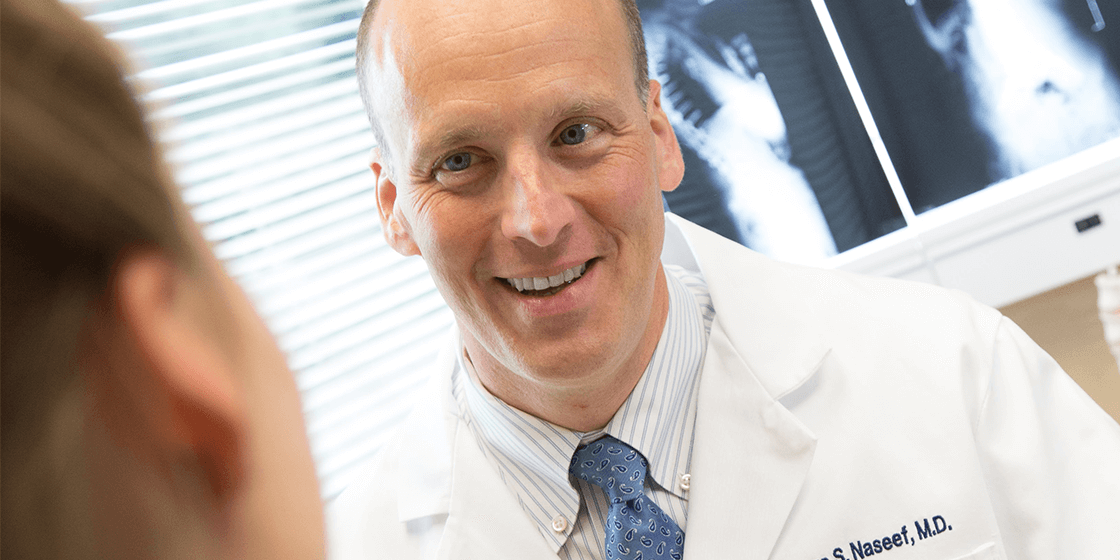In this short interview, Dr. George S. Naseef—board-certified orthopedic spine surgeon—discusses the importance of properly diagnosing back pain and prioritizing a personalized approach to each patient’s unique needs. Dr. George S. Naseef is a founding member of the Advanced Spine Center and the Vice-Chairman for the Department of Orthopaedic Surgery at Morristown Medical Center. An expert in correcting failed back surgery syndrome, Dr. Naseef serves as a regional referral source for particularly complex cases of revision spine surgery.
Do you have stubborn back pain that has not improved with at-home treatments, like rest or over-the-counter medications? You don’t have to suffer any longer. Whether you’ve sustained a work-related injury from an unexpected accident or you have a congenital or degenerative condition of the spine, The Advanced Spine Center will ensure that you receive the highest standard in minimally invasive care to ease your comfort. Contact our patient advocates today and discover how our fellowship-trained surgeons can help you!
Video Transcript:
Hi, I’m George Naseef. I’m a board-certified orthopedic spine surgeon. I grew up locally and went to Boston University for undergraduate and medical school. I went down to Baltimore for Union Memorial Orthopedic Program, where I did pediatrics and oncology at Johns Hopkins. I did my orthopedic trauma training at Shock Trauma Medical Center in Baltimore. I came up to New York City. Completed a spine fellowship with Michael Neuwirth at Beth Israel Medical Center in Manhattan. I’ve been practicing locally for 17 years and I’m primarily out of Morristown Medical Center at this time.
The spine is a very complex area and you have to look at the patient and listen to them in order to understand what their problems are. We start with a physical exam and then we order studies. We try to do the smallest treatments, whether it’s physical therapy, medications, injections, etc. When patients don’t respond to those, it may end up being surgery.
Every patient is different. People will come here with back pain and they’ll think that it’s from their lumbar spine and it may not be. It may be coming from a blood vessel. It could be their aorta. People will come here with “sciatica” and it’s not sciatica. It’s their hip. It’s their knee. So, it’s really important for us to figure out what the cause of the pain is. With thorough exams, studies, x-rays, MRIs, diagnostics, and injections, we can help pinpoint the source of the pain and offer the best solutions.
When patients come here, they’re often looking for a solution to their problem. They’re in severe pain. They have sciatica. They have pinched nerves in their arms. Their neck hurts. You have to start at the beginning. You have to listen to them.
So often, physicians come into the room. They look at the x-rays. They walk out. I don’t think that’s the best way to treat patients. I really like to spend time, know what’s causing the problem, how it began, how it’s responded to treatment, what’s been done for them, what makes it worse, what makes it better…Understanding what the patient’s real problem is offers us the ability to give them the best outcomes. It allows me to figure out what studies to order. It allows me to try to guide their treatment, whether it’s physical therapy, injections, whether they need surgery… and then, when we do surgery, you have to listen to the patient afterward. You have to focus on them. I really believe that being dedicated to their care offers them the best opportunity for success.
